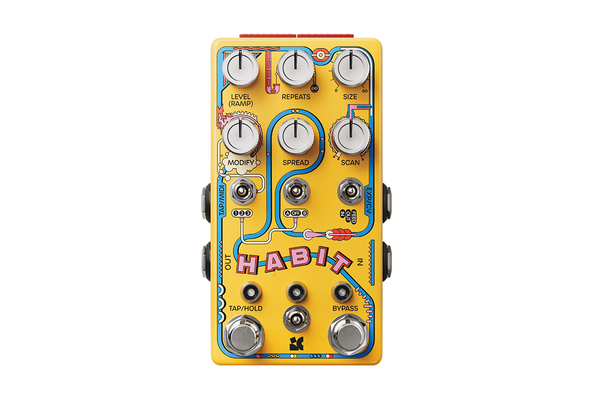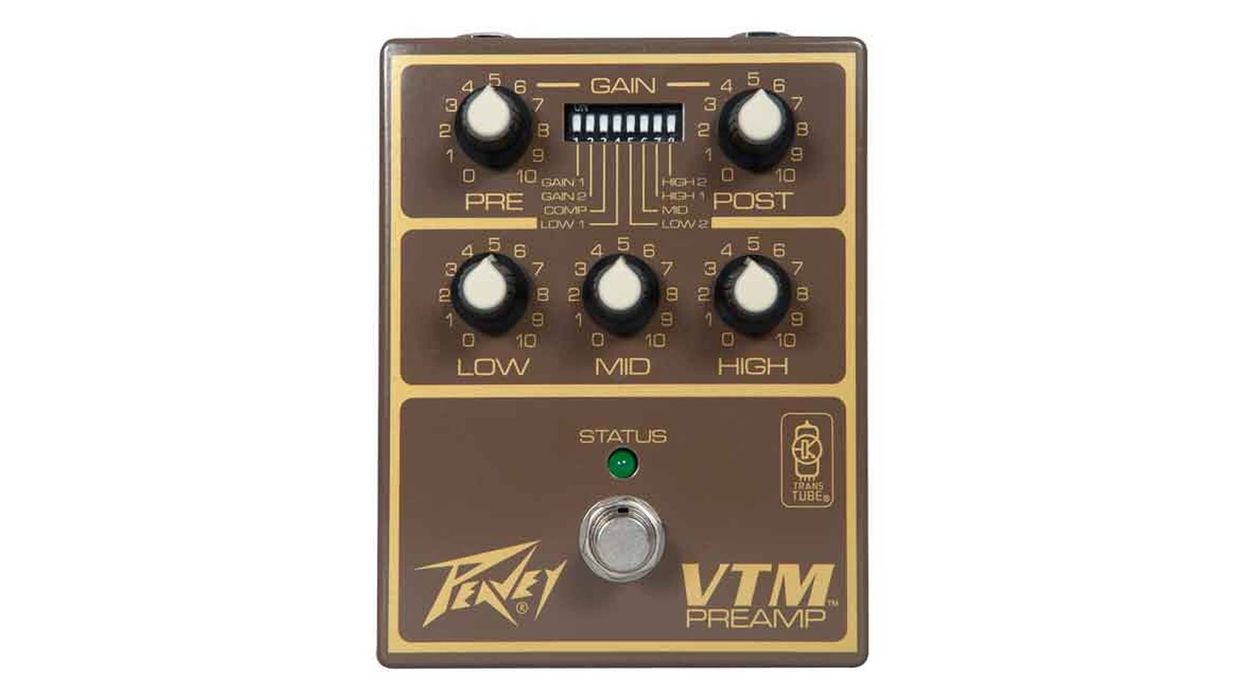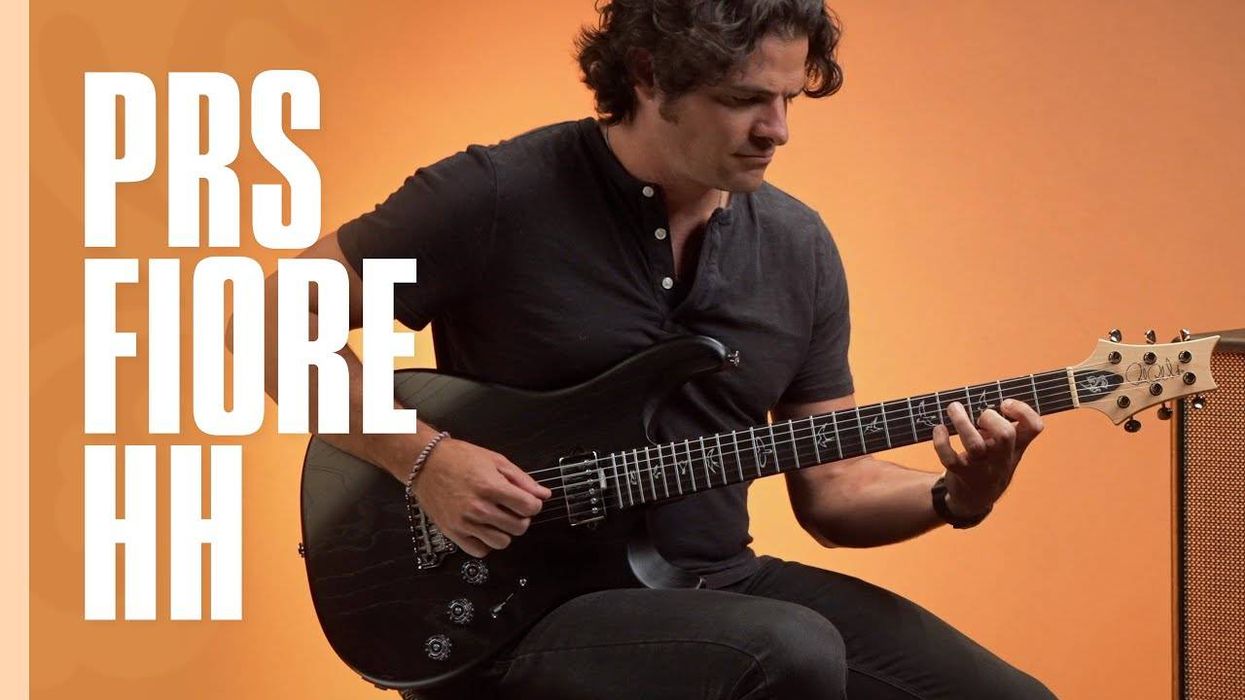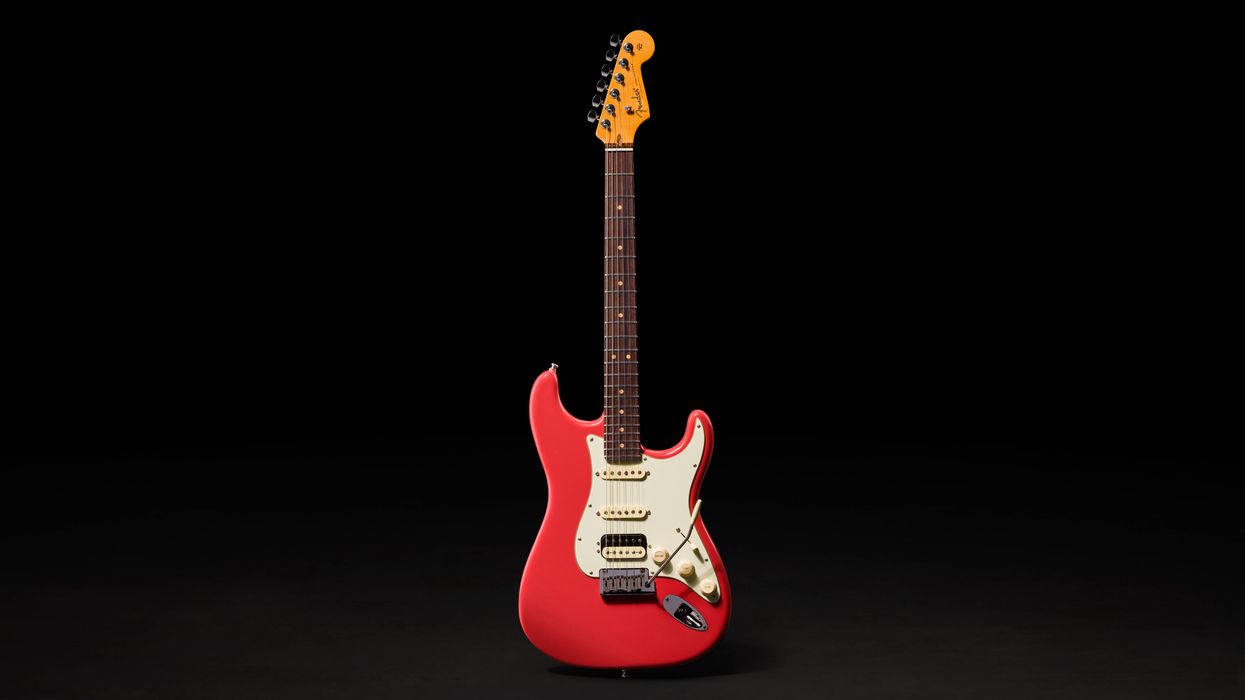Chase Bliss’ creations are driven by some of the most forward-thinking ideas in guitar-pedal design. Each unit is a unique device that reworks, not just tone, but how players engage with effects— almost like a hands-on art project. Look on their website and you see terms like “bottomless looper,” “instant ambience,” and “analog timeshifter” used as the descriptors for their knob- and switch-heavy stomps. Clearly, they’ve carved out their own niche outside convention.
Chase Bliss’ newest offering, the Habit, is equally esoteric. Described on their site as an Echo Collector, it could just as easily be classified as a delay-adjacent device as an echo pedal. Because while the basic elements of a delay live among the many features, the complicated digital architecture gives users access to something much more singular—and weirder.
Deregulated Delay
There’s not much that is linear about the Habit. Much of the user experience feels abstract because the simplest controls don’t always act like regular delay functions. The level and repeats controls act as you’d expect. But instead of a delay-time control, the Habit is equipped with a size knob that reduces delay time without warping pitch. The Habit also offers sixty seconds of delay time, so if you add too much time between phrases you might be waiting a while for parts to come back around again. The space between repeats can also get super tiny, which opens up unexpected and bizarre rhythmic delay possibilities.
The modify knob controls six echo effects—stepped speed, stability, trimmer, smooth speed, filter, and dropper—which are accessed via combinations of two 3-way toggles. The spread control adds a secondary echo, which I used for multi-tap-style repeats. But longer settings open the potential for maximum weirding. The range of this knob is, like the size control, sixty seconds. So by cranking it, you might hear stuff you forgot you played. And if you haven’t cleared the memory—which is done by holding both footswitches—the Habit might regurgitate an idea with a different key, feel, or tone. Conceptual continuity or unintentional chaos? You decide!
Tone and function combinations in the Habit often feel infinite. But I found many highlights. Stepped speed, for example, turns the modify knob into a speed knob, with a zeroed setting at noon. I had fun switching modifiers and hearing how the other controls reacted, each of which was a unique experience. I also enjoyed hearing my ideas pile up on top of each other in collect mode, and I’m a sucker for dry-kill settings, so I can imagine plenty of uses for each function. In the Habit’s default auto mode, the scan knob will search the pedal’s memory and bring back ideas at random in glitched-out glory. But by switching the dip switch for “manual,” the scan becomes like a radio dial spinning through the last sixty seconds of your recorded history. I’d play some riffs for a minute or so, then take to the scan knob. By bouncing between those methods, I laid out an ambient auto- generated, minimalist sound journey. This was easily my favorite way of interacting with the Habit.
Switching the dip switch for “manual,” the scan becomes like a radio dial spinning through the last sixty seconds of your recorded history.
Deep Dip
Like some of Chase Bliss’ other offerings, the Habit includes 16 tiny dip switches on its top panel. Each further modifies the pedals functions in a unique way, and using them almost feels like instant circuit-bending. Because of the size and delicate nature of these switches—and the precision they require—you won’t want to be changing them on the fly at a gig. (And if it’s strapped onto your pedalboard, you probably won’t have the option to anyway). But they enable you to shape sounds a high level of detail.
The Verdict
At its simplest, the Habit is a delay pedal that plays by its own ruled and lives in its own galaxy— somewhere alongside glitchy pedals like the Montreal Assembly Count to Five and Red Panda Tensor perhaps. Yet the Habit is totally unique.
Dialing up settings with precision isn’t easy. There is a lot of guesswork involved in finding your way back to sounds. And with 60-second delay time ranges, rhythmic interactions between size and spread are sometimes hard to configure with exactitude. Plus, with so many control possibilities, you might as well keep a notebook next to your pedalboard, which isn’t everyone’s idea of fun. But if you like the notion of taking the basic functions and sounds of tape delay and mangling them into new, unrecognizable forms that get you out of your safety zone, the Habit will keep you coming back.
















